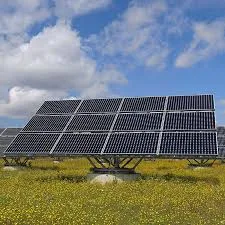Understanding Voltage Levels in Solar Panel Systems for Efficient Energy Production
Understanding Solar Panel Voltage A Key Factor in Solar Energy Systems
As the world increasingly turns towards renewable energy sources, solar panels have become an essential component of sustainable energy systems. One crucial aspect of solar panels that often goes unnoticed is their voltage output. Understanding solar panel voltage is vital for anyone looking to install a solar energy system, whether for residential or commercial use.
Solar panels convert sunlight into direct current (DC) electricity through the photovoltaic effect. Each solar panel consists of multiple solar cells made from semiconductor materials, typically silicon. The voltage produced by these solar cells can vary based on several factors, including the type of solar panel, the irradiance (intensity of sunlight), temperature, and the electrical load connected to the panel.
The nominal voltage of a solar panel is an important specification to consider. Most standard solar panels produce between 30 to 40 volts under optimal conditions. For example, a typical 300-watt solar panel might generate around 36 volts. However, this voltage can drop under less ideal conditions, such as lower light intensity or higher temperatures. This drop in voltage can affect the overall performance of the solar system and the amount of energy produced.
Understanding the voltage of solar panels is also critical when designing a solar power system. The voltage output directly influences how many panels can be connected in series or parallel configurations. In a series configuration, the voltage adds up, while in a parallel setup, the current increases while the voltage remains constant. Additionally, the choice of voltage affects the inverter selection, battery storage systems, and other components in the setup to ensure optimal performance and efficiency.
solar panel voltage

Inverters play a significant role in converting the DC electricity generated by solar panels into alternating current (AC) electricity, which is what most homes and businesses use. The inverter must be compatible with the solar panel's voltage output, as well as the overall system design. Mismatches in voltage can lead to inefficiencies, decreased performance, and even potential damage to the system.
Temperature also influences solar panel voltage. As temperatures rise, the voltage output of solar panels tends to drop. This phenomenon is known as temperature coefficient. Most manufacturers specify this coefficient in their product datasheets, giving users insight into how much voltage can be expected across different temperature ranges. Understanding this can help anticipate energy generation at various times of the year, especially during hot summer months.
Additionally, system performance monitoring tools can be employed to track voltage output and overall system efficiency in real time. These tools provide valuable data that can help identify underperformance or malfunctions in the solar system. Monitoring voltage output is critical for ensuring that the solar energy system operates at its peak efficiency.
For those looking to maximize the efficiency of their solar energy systems, it is advisable to consult with a professional installer or engineer. They can help assess the specific voltage requirements based on the energy needs, system size, and type of solar panels used. Whether choosing monocrystalline, polycrystalline, or thin-film solar panels, understanding the characteristics, including voltage, is essential for making informed decisions.
In conclusion, solar panel voltage is a fundamental aspect of solar energy systems that can significantly impact performance and efficiency. A thorough understanding of voltage, as well as its implications for system design and component compatibility, is essential for anyone considering solar energy. As technology advances and more people adopt solar energy, knowledge about vital specifications like voltage will continue to be crucial in creating effective and sustainable energy solutions. By being informed, consumers can ensure that they not only invest in solar technology but also maximize its potential benefits for years to come.
-
Unlocking Energy Freedom with the Off Grid Solar InverterNewsJun.06,2025
-
Unlock More Solar Power with a High-Efficiency Bifacial Solar PanelNewsJun.06,2025
-
Power Your Future with High-Efficiency Monocrystalline Solar PanelsNewsJun.06,2025
-
Next-Gen Solar Power Starts with Micro Solar InvertersNewsJun.06,2025
-
Harnessing Peak Efficiency with the On Grid Solar InverterNewsJun.06,2025
-
Discover Unmatched Efficiency with the Latest String Solar InverterNewsJun.06,2025







